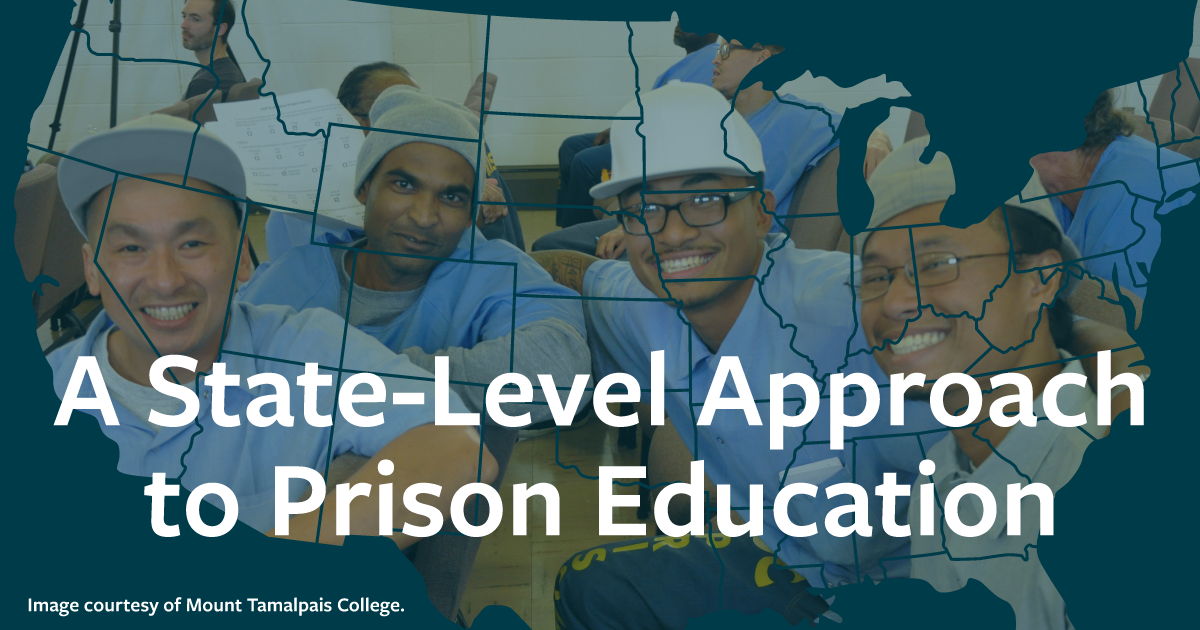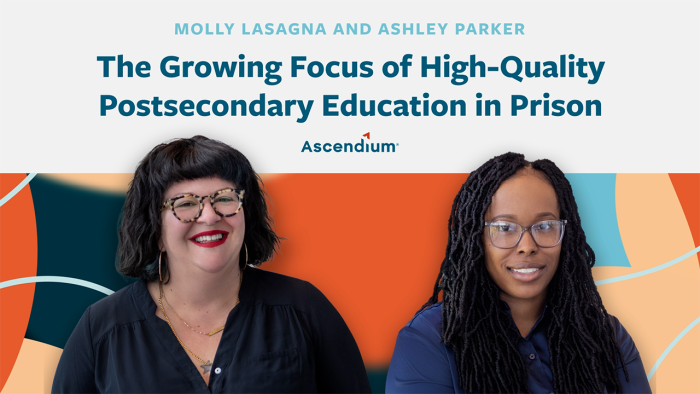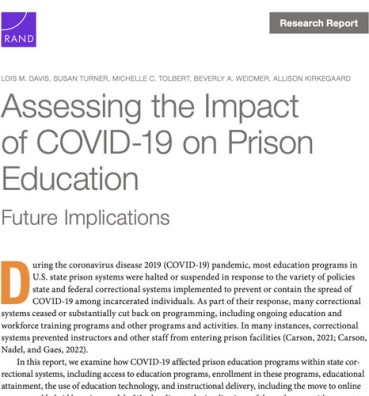
State-Level Initiatives Paving the Way for Postsecondary Education in Prison
 Ascendium's philanthropic approach involves addressing barriers to high-quality postsecondary education for individuals in prison. A significant milestone in this journey occurred in 2023, when the U.S. officially lifted its 26-year ban on Pell Grants for incarcerated learners. Pell Grants, federal funds for undergraduates facing financial challenges, have the potential to substantially expand access to postsecondary education in prison. Beyond financial implications, this restoration marks a pivotal shift in the landscape, moving away from heavy reliance on private funding to a model supported by public initiatives, breaking the dependence on nonprofits and private institutions to bear the costs.
Ascendium's philanthropic approach involves addressing barriers to high-quality postsecondary education for individuals in prison. A significant milestone in this journey occurred in 2023, when the U.S. officially lifted its 26-year ban on Pell Grants for incarcerated learners. Pell Grants, federal funds for undergraduates facing financial challenges, have the potential to substantially expand access to postsecondary education in prison. Beyond financial implications, this restoration marks a pivotal shift in the landscape, moving away from heavy reliance on private funding to a model supported by public initiatives, breaking the dependence on nonprofits and private institutions to bear the costs.
Given these advancements, the importance of states in expanding postsecondary education in prison has never been more evident. To achieve systemic change, it’s imperative that we put our support behind state-level actors such as state departments of corrections, which wield control over both access to and the allocation of resources for education in prison. Collaborative efforts between these state-level actors and public universities and university systems are mutually beneficial (see How Postsecondary Education in Prison Benefits States and Communities), leading to a more substantial impact on the lives of incarcerated learners.
Here are some of the ways in which Ascendium is supporting postsecondary education in prison at the state level.
- We believe in investing in partnerships between state-level departments of correction and state-level college systems. A notable example of this collaboration is our recent grant to Portland State University, which supports the development of transfer pathways for incarcerated learners in Oregon in partnership with two community colleges. Beyond paving a clear route to a bachelor’s degree, Portland State University and its partners are committed to offering comprehensive support to learners both during their time incarcerated and after release. Initiatives like this showcase the significant potential for positive change when these entities work together.
- Our strategy also involves establishing hubs of technical knowledge and funding. These hubs act as places to redistribute funds to help individuals and projects on the front lines. A prime example is our grant to the Research Foundation for SUNY. This grant is helping the State University of New York (SUNY) grow its postsecondary education in prison programs. It's also strengthening the SUNY Office of Higher Education in Prison, making it the go-to organizer and helper for programs on 20 SUNY campuses. Such grants highlight how we can build powerful networks that make a real impact.
- In addition to SUNY, we have made key investments in organizations such as the Georgia Coalition for Higher Education in Prison and Education Commission of the States. These partnerships span across states, aiming to identify common barriers and solutions while fostering regional collaborative efforts.
How Postsecondary Education in Prison Benefits States and Communities
Despite declining enrollments in postsecondary education, state systems have a unique opportunity to achieve enrollment and completion goals by expanding the reach of postsecondary education to a broader group of students in public schools. This makes them more eligible for additional federal funding while garnering public support. But the positive impact of postsecondary education in prison goes beyond superficial advantages.
According to a study conducted by the Department of Policy Studies at the University of California, Los Angeles, a $1 million investment in prison education prevents more than 600 crimes, compared to around 350 crimes prevented by the same investment in incarceration alone. This indicates that prison education is almost twice as cost-effective as simply focusing on incarceration. Another study by the RAND Corporation found that for every $1 invested in prison education, taxpayers save $4-$5 in re-incarceration costs during the first three years post-release. These substantial benefits extend beyond incarcerated learners, contributing positively to the broader public.
As the effects of Pell Grant restoration unfold in the coming months and years, Ascendium remains committed to supporting states in expanding opportunities for incarcerated learners. We are pleased to be part of this movement, driving positive change and evolving our understanding of this population of learners with each new initiative.
To learn more about Ascendium’s efforts to expand postsecondary education in prison, visit our website.


